Do you want to know What does slant back German Shepherd mean? What slant back German Shepherds are called? Are there any downsides of Slant Back German Shepherds? How many types of slant back German Shepherds and how they are different from each other? You’re in the right place.
A “Slant Back German Shepherd” typically refers to a specific physical characteristic found in some German Shepherd dogs, where the backline slopes downwards from the shoulders to the hips, rather than being straight.
This trait is more commonly associated with the American Show Line German Shepherds and West (European) Show Line German Shepherds, rather than the Working Line German Shepherds. The German Shepherds with slant back are called show line whereas German Shepherds with straight back are called working line.
Related: Straight Back German Shepherds | Types of Working Line GSDs | How Slant (Sloped) Back German Shepherds Were Created?
At your left side there are two slant back show line German Shepherds whereas at your right side there are two straight back working line German Shepherds. You can see a massive difference between the slopes (angulations) of their backs.
Do remember that some working line GSD types such as West Working Lines and Czech Working Lines do have a moderate slant back but it is not angulated as Show Lines have.
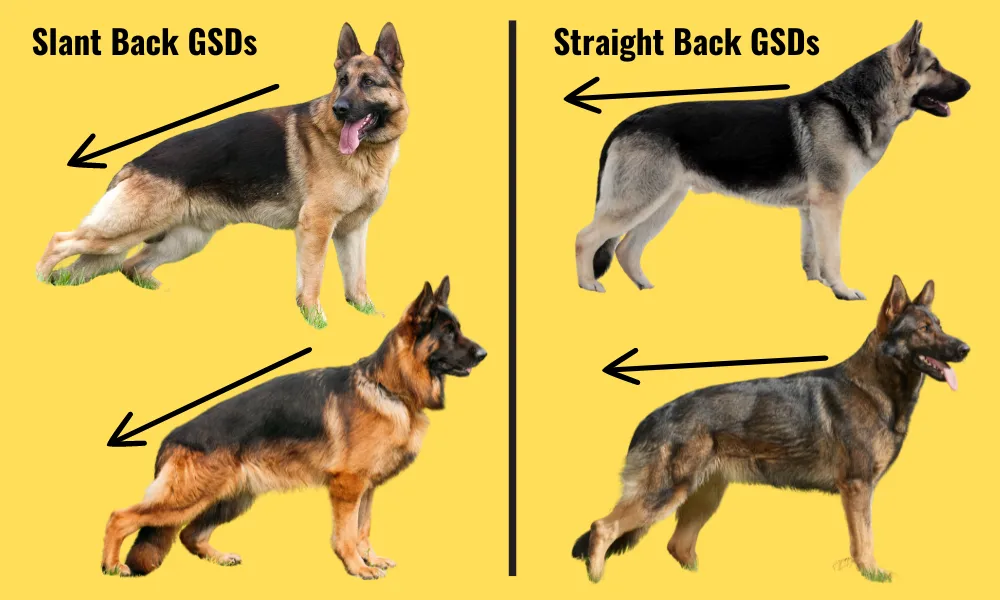
It is important to understand that the German Shepherd breed was originally bred for working purposes, including herding and protection. However, over time, breeding for show purposes has led to a divergence in the physical traits emphasized within the breed.
The slanted back is often seen as aesthetically pleasing within show circles, leading to its popularity among some breeders and judges.
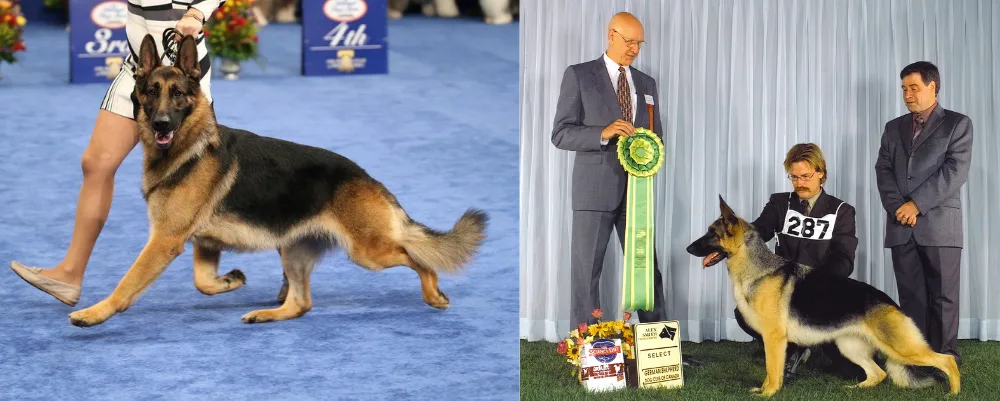
|| DON’T MISS! Today’s Deals on Chewy – Pet Foods, Pet Products, Pet Supplies, Pet Toys and more..
01. Are There Any Downsides of Show Line (Slant Back) German Shepherds?
The slant back is not without controversy, as critics argue that breeding for such exaggerated physical traits can lead to health problems. Dog experts have raised concerns over the health of show line German Shepherds in recent years, pointing towards the breeding practices that prioritize appearance over health. Specifically, they highlight issues such as the exaggerated sloping back, which has been associated with increased risk of hip dysplasia, a painful condition affecting the dog’s hip joints.
Additionally, these dogs are reported to be at a higher risk for degenerative myelopathy, a serious spinal cord disease leading to paralysis. Experts argue that these health problems are exacerbated by the narrow genetic pool from which show line German Shepherds are bred, limiting genetic diversity and perpetuating hereditary diseases.
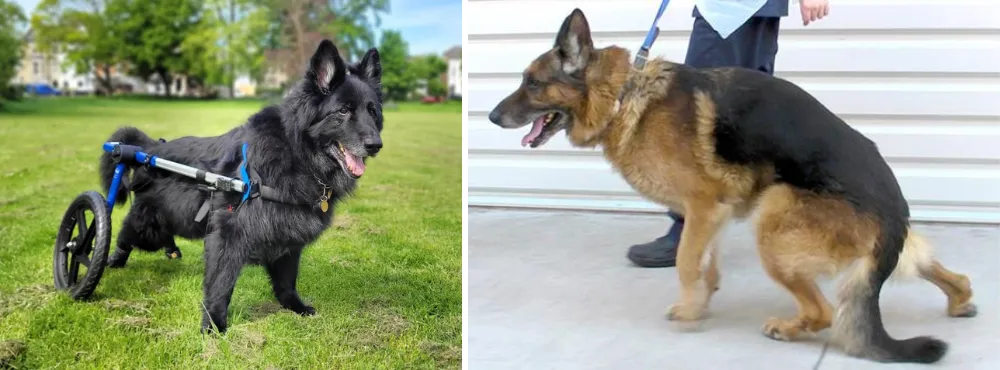
Despite this, proponents of the slanted backline claim that when done responsibly, breeding for specific physical traits does not necessarily compromise the overall health and functionality of the dog. It is also essential to note that a German Shepherd’s ability to work or perform tasks is not solely determined by its physical appearance. Many slant-backed German Shepherds are still very capable of performing the roles they were originally bred for, including as service dogs, in search and rescue, and in law enforcement.
When considering adopting or purchasing a German Shepherd with a slanted back, potential owners should prioritize the health and temperament of the dog over physical appearance. Responsible breeders will provide health clearances for both parents and will be transparent about any potential hereditary health issues.

02. Types of Slant back German Shepherds and How They are Different From Each Other
Typically, there are two main types of slant back (show line) German Shepherds: the American Show Line German Shepherds and the West (European or German) Show Line German Shepherds. The differences between these two lines go beyond geography; they encompass variations in appearance, temperament, and health.
While American Showline German Shepherds might be more commonly seen in American dog shows, West Showline German Shepherds are often preferred for international competitions and working roles, such as search and rescue, police work, and as service dogs. This difference underscores the varying breeding philosophies between the two, with one focusing more on aesthetics and the other on functionality and health.
RELATED
- 20+ Top German Shepherd Breeders In US | Buy Puppies & Dogs
- How to Spot a Fake German Shepherd Puppy | 10 Tips
- How to Know German Shepherd Puppy is Male or Female | Gender
- A Guide for Raising German Shepherd Puppy at Home
- How to Determine the Age of German Shepherd Puppy or Dog
- How to Measure Height & Length of a German Shepherd
- German Shepherd Coat Color Patterns and Variations
- 4 Types of German Shepherd Coats
- 8 Ways to Identify Long Coat German Shepherd Puppy
01. American Show Line German Shepherds
American Show Line German Shepherds are known for their unique angulation and a sloping back, which creates a distinct silhouette that is highly prized in American dog shows. They are bred with an emphasis on their appearance to meet the standards set by the American Kennel Club. They typically have a more angulated hindquarters and a sloped back, which distinguishes them visually from European (West) Show Line German Shepherds.
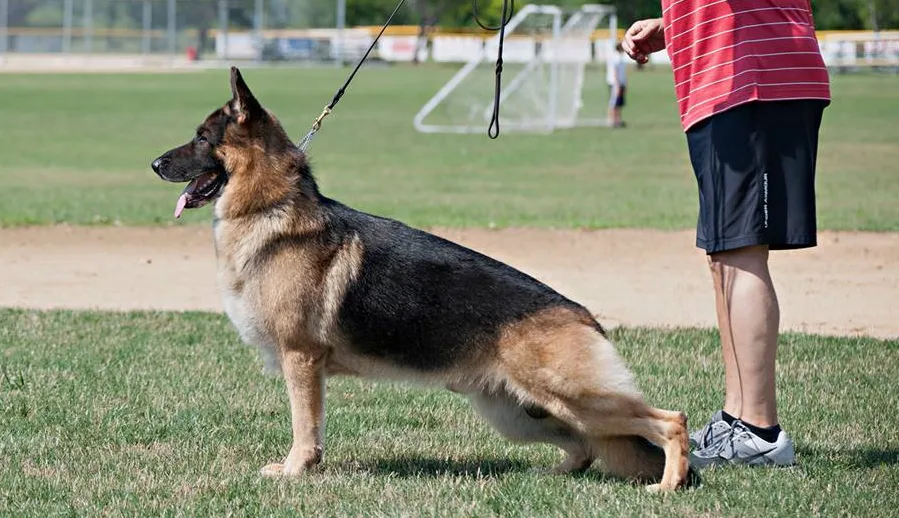
Their gait is smooth and effortless, making them standout performers in the show ring , and their overall appearance is slightly larger with a more pronounced demeanor than their Western(European) counterparts. The American Show Line German Shepherds often have a richer tan and a deeper black coloration. Other colors include the less common blue and liver, solid black, saddle sable and solid white.
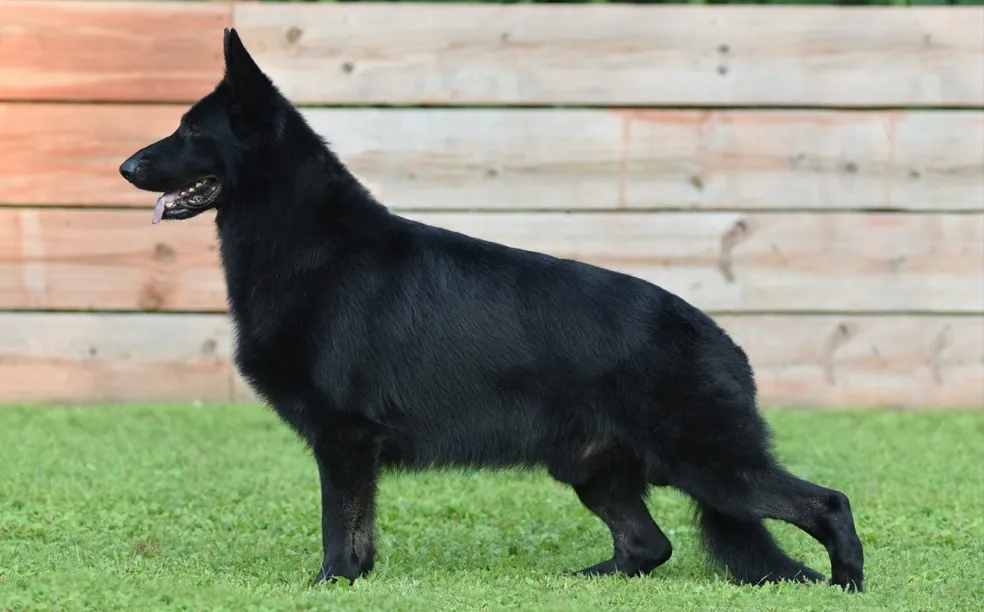
02. West (European) Showline German Shepherds
West (European or German) Show Line German Shepherds exhibit a straighter back compared to the American show lines aiming to reduce the risks of hip dysplasia and other health issues. Adhere to the standards set by the Verein für Deutsche Schäferhunde (SV) in Germany they are bred with a strong emphasis on working abilities alongside their physical appearance, resulting in a more balanced dog in terms of temperament and functionality.
The West Show Lines tend to have a more robust build and a darker, richer coat color.
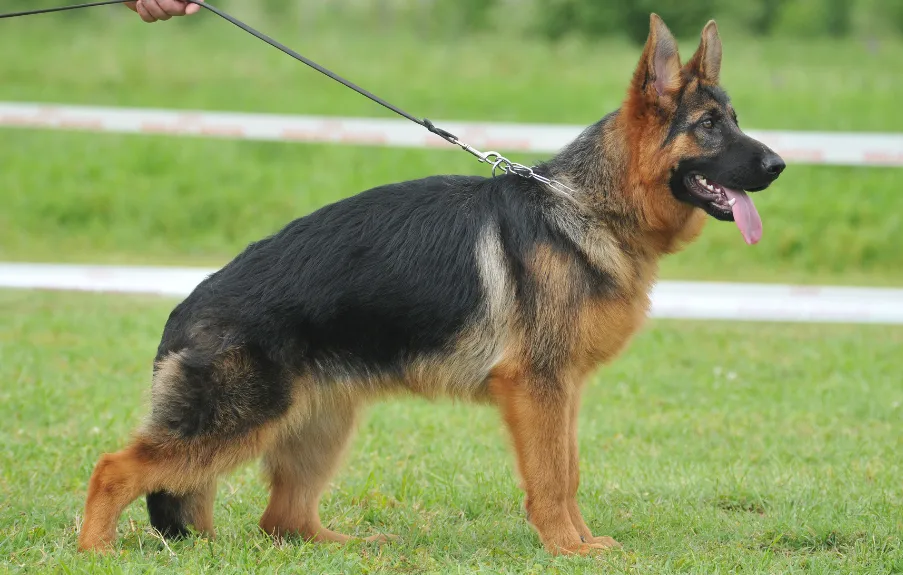
One of the hallmarks of the West Showline German Shepherd is its gait, a fluid, outreaching movement that is often described as floating above the ground. This is a reflection of the breed’s sound structure and balanced proportions. However, their beauty and showmanship do not detract from their intelligence. They are highly adaptable, capable of performing a wide range of tasks from service and therapy work to personal protection.
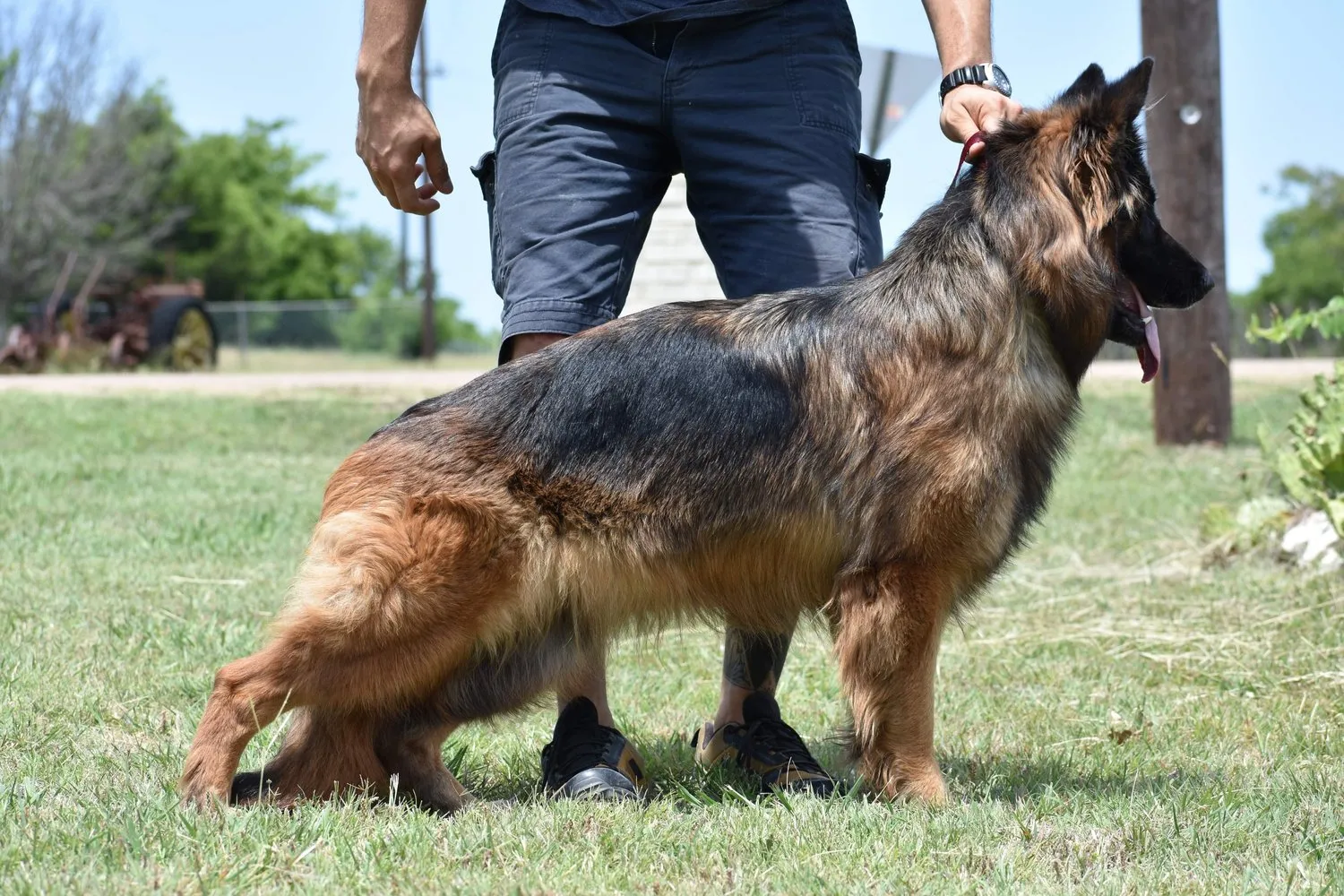
03. Health
Health-wise, both lines have predispositions to certain genetic conditions, including hip and elbow dysplasia. However, West (European) line German Shepherds may have a slight advantage due to stricter breeding regulations in place to minimize hereditary diseases. Mental and physical stimulation needs vary slightly between the two lines, with the European lines often requiring more engagement due to their working heritage.
04. Temperament
Temperamentally, American Show Line German Shepherds are generally considered to be calmer and more adaptable to a family environment, often being content with being a loving pet and show competitor.
In contrast, the West (European) line German Shepherds, with their working lineage, may exhibit a higher drive and energy level, necessitating a more active lifestyle and training regimen. These dogs thrive on interaction with their human families and do not do well if neglected or left alone for long periods. Therefore, they are best suited to active households that can offer plenty of space and time to nurture their development.
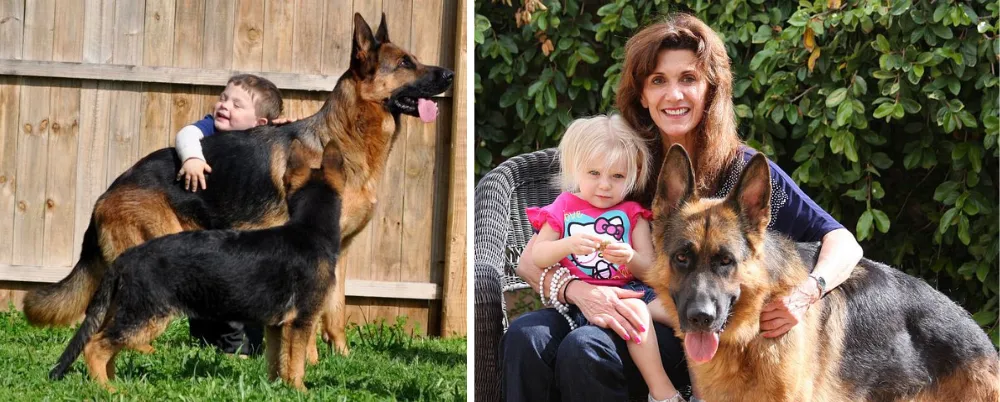
05. American Showline German Shepherd or West Showline German Shepherd: Which One is More Popular?
Among German Shepherds, the American Showline and the West (European) Showline are two distinct types that enthusiasts and potential dog owners frequently compare.
The West Showline German Shepherds are often cited as being more popular on a global scale, particularly in Europe, due to their adherence to the original breed standards set by Max von Stephanitz, the breed’s founder. These dogs are well-regarded for their balanced temperament, striking appearance, and versatility in work and show environments.
On the other hand, American Showline German Shepherds are especially popular in the United States, praised for their unique angulation and movement, as well as their success in American-style dog shows.
However, when it comes to global recognition and preference, the West Showline German Shepherds tend to have a broader appeal due to their closer alignment with the breed’s working dog heritage and the stringent standards maintained in their breeding.
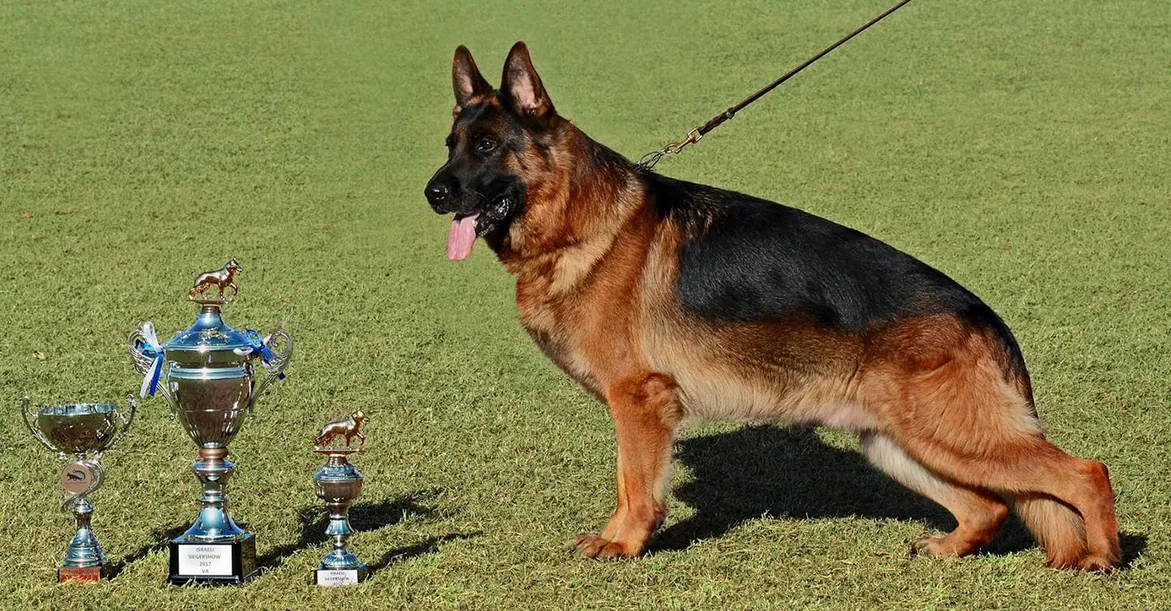
Final Thoughts
We hope that you must have a good understanding about Slant Back Show Line German Shepherds. In summary, Show Line German Shepherds, whether American or West(European), offer unique qualities suited to different preferences and lifestyles. The choice between the two depends on an owner’s desire for either a more show-oriented companion or a versatile dog capable of excelling in various roles, including work and companionship. Understanding these differences is crucial for prospective owners to align their expectations with the capabilities and needs of these magnificent animals.
If you like this post then don’t forget to share with other people. Share your feedback in the comment section below.
Also Read
- Is White German Shepherd a Good Family Dog?
- 5 Different Types Of German Shepherd Breeds & Their Features
- Are White German Shepherds Purebred?
- How To Know What Type Of German Shepherd Do You Have?
- 15+ Top German Shepherd Breeders in Kentucky State
- Is There a Mini German Shepherd Breed Exist?
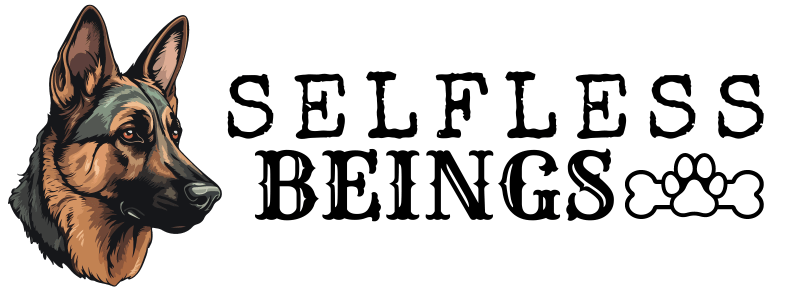
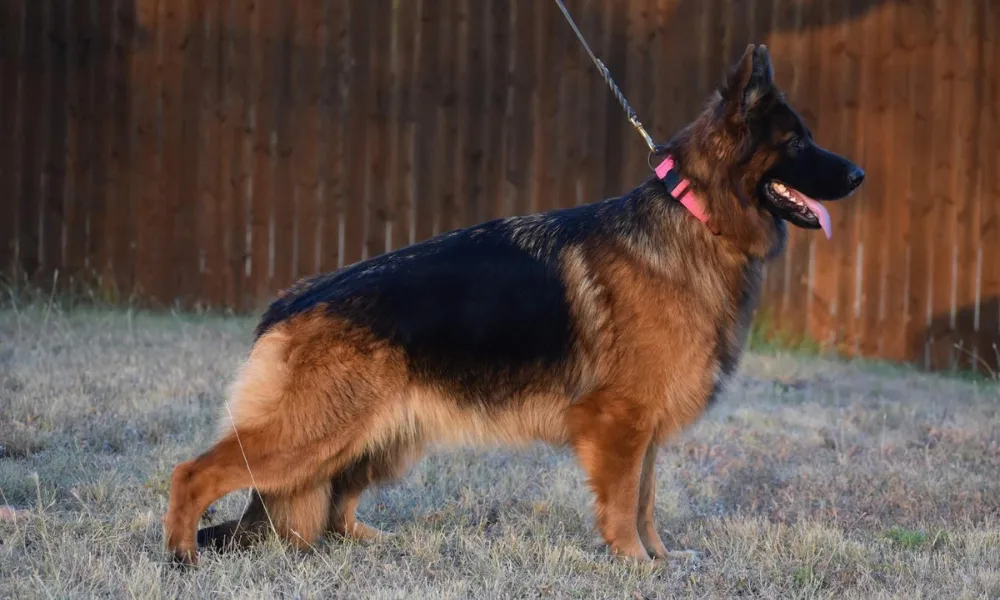


Leave a Reply